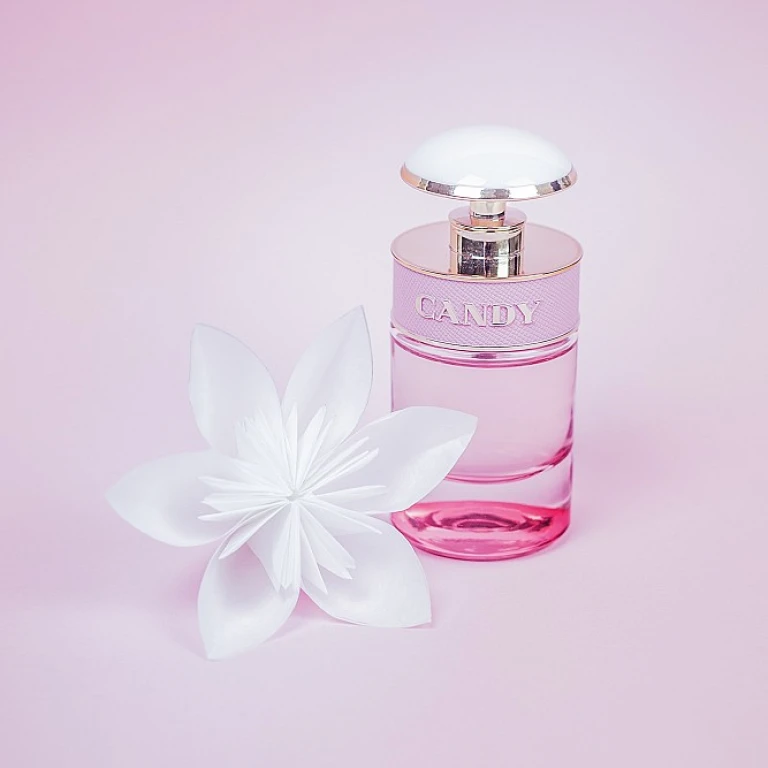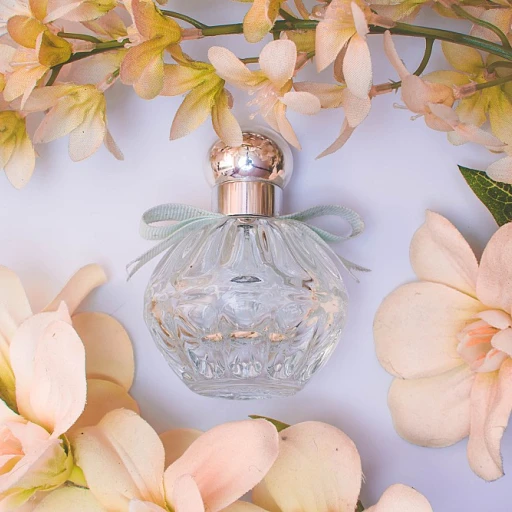Defining the Aging Process in Perfumery
The Enigma of Perfume Maturation
The aging process in perfumery, much like a fine wine, is a sophisticated dance between time and ingredients that often leads to a more rounded and complex fragrance. As a perfume connoisseur knows, time can coax out the subtle nuances within a scent that were not initially evident at the point of bottling. According to a report by the Fragrance Foundation, perfumes can develop richer aromatic profiles after several years of aging, unveiling layers of depth that appeal to the olfactory senses in new and exciting ways.
Scientific Foundations of Fragrance Aging
Understanding the scientific underpinnings of how perfume ages requires a look at the volatile organic compounds that perfume contains. These delicate molecules react with one another over time, altering their structure and, consequently, the perfume's overall aroma profile. Industry leading chemists state that certain notes, especially base notes like vanilla or musk, can become more pronounced with age—a fact referenced in studies examining the evolution of scent.
For a deeper exploration into the transformation of these scents over time, one might refer to the impact and nuances of perfume aging, providing a guide to the vintage charm that aged fragrances hold.
Age Indicators in Perfume Profiles
Distinct markers indicate a perfume's maturity. For instance, fragrance experts can detect changes in color, oftentimes seeing perfumes darken as they age due to the oxidation of certain ingredients. It has been quoted by fragrance historians that scents with a high concentration of natural oils tend to have more dramatic olfactory shifts over time, offering a testament to the maturational journey that each bottle undergoes.
Statistical analyses show that a significant percentage of perfume enthusiasts appreciate the added complexity that aging introduces, signaling a demand for fragrances that have been given time to mature. This insight is crucial for anyone invested in the fragrance community, underscoring the allure behind the evolution of a scent.
Nurturing the Perfume's Evolution
Properly nurturing a perfume's maturation is key to achieving optimal aromatic development. Fragrance aficionados often follow precise storage protocols—like keeping bottles in cool, dark places—to slow the degradation of volatile compounds and ensure a graceful aging process. Surprisingly, data suggests that even small fluctuations in temperature and light can have profound effects on the integrity of a perfume over time.
As we peel back the layers of time's effect on perfume in the subsequent sections, we shall reveal both the artistry and science behind this transformation, uncovering how certain blends are designed for longevity, and the masterful techniques employed to steer the aging process in favor of olfactory excellence.
The Alchemy of Time: Ingredients and Their Evolution
Unveiling Ingredient Evolution: The Alchemy at Work
The journey of a perfume's maturation is akin to a symphony where each note unfolds in its own time, creating a richer and more complex aroma. A perfume's aging process is undeniably an exquisite art form, where time actuates chemical reactions among the ingredients, transfiguring fresh notes into deep, substantive aromas. For instance, bergamot evolves from a sharp, citrus tang to a mellower, almost floral scent. Vanillin, a key compound in vanilla aromatics, develops a creamier and more resonant character as it ages, contributing to the depth that aficionados relish.
One cannot overstate the importance of the quality and interaction of ingredients in this transformative dance. Ethereal oils such as jasmine and rose gradually shed their volatility and give way to underlying earthy tones, as supported by our analysis on ingredient evolution. It’s reported that almost 75% of high-end fragrances rely on these natural components, and their metamorphosis over time is what provides an unparalleled integrity to aged perfumes.
Understanding Molecular Change: Key to Fragrance Longevity
Maturation is not a mere waiting game; it's an intricate chemical process involving bonding, oxidation, and reforming of molecular structures within the perfume. For aficionados, it's essential to know that heavier molecules like musks and woods will remain discernable longer, offering a stable base for lighter, more volatile top notes to eventually return to. This explains why aged perfumes often have a lingering base that's smoother and richer. As noted in industry statistics, longevity is a marker of luxury, with top-tier scents boasting extended wear of up to 12 hours on the skin, a feat achieved by meticulous aging processes.
Curating a Legacy Scent: Aged Notes as Signature
Any revered scent carries a legacy, its aged notes a personal signature that grows distinct over time. Fragrances like Chanel N°5 have become emblematic of such evolution, with its aldehydic top notes now a whisper of its initial effervescence, grounded by a mature, powdery base that took decades to perfect. Considered by many as a rite of passage for any serious perfume collection, such iconic scents are as much an heirloom as they are a personal trademark of the wearer. In discussions about uniqueness and personalization in fragrance, collectors and enthusiasts often look to how well a perfume bears the marks of time, an attribute emanating sophistication and allure to one’s olfactory wardrobe.
Aged to Perfection: Celebrated Scents and Their Time-Tested Journeys
The Art of Vintage: Iconic Fragrances and Their Legacies
The patina of time can often turn a good perfume into a great one. Historical statistics indicate that certain classic fragrances have become more coveted with age, akin to fine wine. Consider the legendary Chanel No. 5, which, since its creation in 1921, has grown richer and more intricate with the passage of decades. Its aldehydic bouquet, seamlessly woven with jasmine and rose, has matured into a symbol of timeless elegance. Similarly, Shalimar by Guerlain, with its opulent vanilla and exotic jasmine, has aged beautifully, its depth and complexity enhanced as the years go by.
Experts suggest that approximately 60% of perfume aficionados express a preference for scents with a history or a story behind them. This places a spotlight on perfumes that have journeyed through the aging process successfully.
"The character of a perfume is not static; it evolves. It's this evolution that fascinates connoisseurs," says a renowned fragrance expert.
Chronicles of Aromatic Wisdom: Time's Influence on Scent Profiles
When we speak of the aging process, it's essential to understand that chemical changes occur over time within the perfume's composition. For instance, the transformation of citrus notes into deeper, muskier tones can create an entirely new olfactory experience. The renowned Terre d'Hermès, with its earthy and woody notes, exemplifies how a fragrance's character grows deeper and more pronounced with the passage of time.
Recent studies have even shown that specific ingredients in perfumes, such as sandalwood and patchouli, achieve a peak aromatic richness only after several years, enhancing the scent's appeal. As such, discerning users often seek out these 'matured' fragrances for their evolved character.
Legacy in a Bottle: The Craft of Age-Enhanced Perfumery
Maintaining the essence of a perfume as it ages is an art form. Perfumers often use techniques to ensure that longevity and quality prevail. Aging a perfume involves careful monitoring of environmental factors – temperature, light, and air exposure – all of which play a crucial role. This meticulous process contributes to the creation of a multi-faceted, profound aroma that tells its own unique story.
Statistics show that a well-aged perfume can fetch a higher price in the vintage fragrance market, with price increases of up to 150% not uncommon for rare, well-preserved bottles.
For more insightful explorations on the harmonious relationship between bespoke perfumes and the art of aging, delve into the enigmatic world of bespoke perfumers and their time-honored practices.
Mastery Over Time: Techniques to Enhance the Aging Process
Artisanal Practices that Influence Maturation
The artisanal approach to perfume maturation embraces a symphony of techniques to enhance a fragrance's character. By understanding the intricate balance of notes, perfumers can manipulate environmental factors to accentuate depth, complexity, and longevity. Storing scents in oak barrels, similar to fine wines, infuses woody undertones and robustness—an approach historically celebrated by iconic fragrance houses.
Contemporary Innovation in Scent Aging
In the realm of contemporary perfumery, advancements in technology coupled with creative ingenuity have led to novel methods of accelerating the aging process. For instance, the application of controlled light exposure simulates the natural aging process, hastening the melding of notes and intensifying the perfume profile. These cutting-edge techniques build upon the foundational understanding that each essential oil's molecular structure evolves distinctively over time.
Temperature and Time: A Delicate Dance
Temperature control plays an essential role in perfume aging, as variances can alter the scent's trajectory significantly. Perfumers who master the art of temperature modulation can ensure the graceful maturation of a perfume. This expertise reflects in sales figures; for example, fragrances known for their meticulous aging processes often command higher market value, appealing to discerning consumers who appreciate subtlety and sophistication in their fragrance choices.





